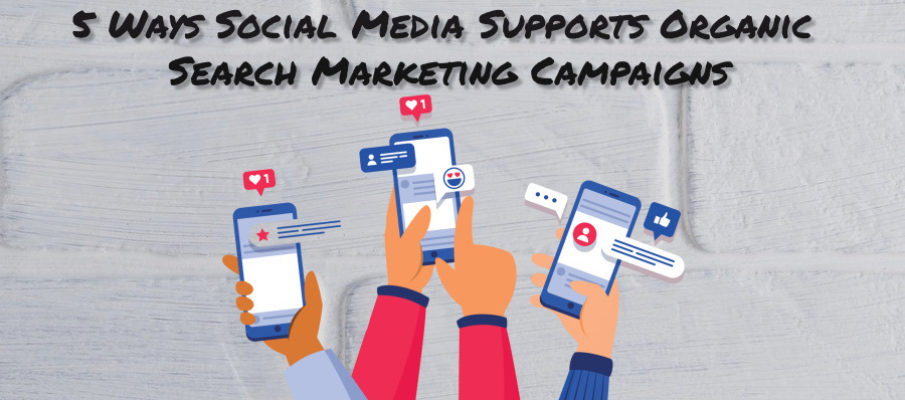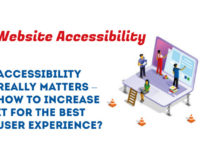First and foremost, it’s important to realize that social media doesn’t directly improve search rankings.
There are many mixed messages on the subject, despite many studies and claims.
Google itself has sent mixed signals – Matt Cutts, who was then head of Google’s web spam team, posted a video in 2010 claiming, “Yes, I can confirm that. Twitter and Facebook links in the rankings as we have always done. ” in our rankings in the web search … ”
But four years later, Cutts released another video stating that social signals, including Twitter subscriptions and Facebook likes, don’t affect search rankings.
Google, he explained, is scouring the Internet for information and is effectively taking a snapshot of that moment. But social media is constantly being updated and sending incomplete signals so it doesn’t provide a complete picture.
Several studies have been published since then, including Semrush’s mid-2020, which cited a CognitiveSEO study of more than 23 million stocks. The discovery was that shares on social media sites had no real impact on SEO rankings.
However, the study found that as more people share content on social media, it actually generates social signals that indicate that your posts are useful to your target market.
You might be thinking, “Okay, links to my social media content are good for SEO, but my number of followers and likes doesn’t affect my rankings. Law?
“Well … it’s hard to say for sure. Google hasn’t said much on the subject in the past few years. Some studies have cited a relationship between high percentages and high rankings on some social media platforms, but the problem is that correlation is not causality.
Any correlation is more of an indicator that a website is doing a good job of producing quality content that engages audiences on both social media and organic search traffic channels.
Search engines are also limited by the challenge of assessing the true identity and authority of social profiles, making it difficult for them to know how much value is placed on a link.
We know that Google doesn’t consider sharing on Facebook to be synonymous with a backlink from an authority site.
But social media affects SEO in other, less direct ways, including:
• Distributes content.
• Increases brand awareness.
• Enhances the brand’s reputation and authority.
• Improves the life of a post.
• Increases organic traffic and online visibility.
All of these benefits add up to a noticeable impact on your SEO rankings.
5 Ways Social Media Supports Organic Search Marketing Campaigns
If social media is unlikely to directly affect your brand’s search rankings, what is the point of merging your social media and SEO strategies?Here are five ways to use social media for SEO.
1. Create link options
Number one on this list is also the hardest to get to.The difficulty lies more on the receiving end than on the actual implementation, as this method is passive.
It depends on the action of a third party without a direct nudge from you. Simply put, you rely on social media to promote your content and make people aware that it exists.
It’s amazing how clearly the fantastic content was researched and taken many hours to produce but received little to no promotion.
Countless times I’ve come across content on social media that made an impact. I can save it for reference later, often as a quote or a quote related to one of my posts.
I already mentioned that a link on Facebook is not the same as a backlink on another page.
But the Facebook link drew my attention to the existence of the content in order to be able to refer to it on my website. That’s what I mean when I say it’s a passive way of building link opportunities by promoting your content.
Takeaway
• Create a social media marketing strategy to promote your content (which may vary depending on the type of content and where you share it).
• Develop a standard working procedure (SOP) to ensure that all new content goes through the release strategy.
• Maintain an up-to-date list of permanent content that should be re-shared on a regular basis.
Remember: social media only shows your content to a small fraction of your potential audience, so a single share won’t reach everyone who follows you.
2. Increase brand awareness and positive mentions
The Google Search Quality Raters Guideline document shows that human reviewers include brand mentions in the equation when considering a website’s reliability.
That doesn’t mean the algorithm does, but we know that these guidelines are representative of what is important to Google.
This is where social media can play an important role in the overall perception of your brand.
Companies with a strong social media presence and a direct response to their customers see a noticeable increase in overall satisfaction.
For example, companies on Twitter reported a 19% increase in overall customer satisfaction. This affects the sentimentality of brand mentions overall, including in customer reviews and public forums.
You want people to talk about good experiences with your brand, not bad ones. Google pays attention to the context of your online engagement and how people talk about you, which affects your ranking.
Notice that I said what you rank for, not how you rank. Google uses online mentions to rank you as relevant (or irrelevant) to search queries based on a variety of factors.
You want your brand’s mentions to stay positive, and social media is a solid tool to help you with that.
Takeaway
• Find ways to promote positive mentions of your brand on social media and elsewhere.
• Use social media to build an audience of true brand advocates.
• Adapt your message to different social platforms for maximum success according to your target audience.
3. Build partnerships
While I still share content on social media the best way, I spend more time building relationships on social media that can lead to potential partnerships.
The sad truth is that it is getting harder and harder to reach your audience organically on social media.
But these platforms were originally designed to connect people and maintain relationships, and they still excel in that function.
There are three levels of relationship building that you should focus on:
• Brand Attorneys: Active social media fans who are loyal to your brand and advertise you for free, which multiplies your effectiveness without paying a penny extra.
• Organic Influencers:
Unlike paid influencers, these are social media accounts that have real expertise, authority, and trustworthiness (the E-A-T formula) in your industry. Any positive endorsement of your brand, product, or service carries a lot of weight with your engaged audience.
• Strategic Partners:
Non-competitive companies or influencers in your niche that are willing to band together and create valuable content together that your two audiences can leverage for cross-marketing opportunities.
Let me give you an example of how partnerships can grow and be of use.For several years I had a relationship with Steve Rayson, the co-founder of BuzzSumo.
I’ve interacted with his posts and shared his content regularly and even offered helpful ideas on several occasions. In early 2018, he sent me a draft of a successful BuzzSumo report that he had written about massive changes and trends in social engagement.
Since we already had an established relationship (I wasn’t a stranger asking for a favor in cold contact) I asked him if I could summarize the report for the Search Engine Journal and publish it once the report was published to the public.
Rayson gave his blessing.
The result: My article New Content Trend Report: Social Sharing Down 50% Since 2015, this was the first ad most viewers saw, generating over 3,900 reads and over 1,000 shares. This is just one example of how building beneficial relationships through social media can open up otherwise unattainable opportunities to expand your reach.
Takeaway
• Devote more of your social media efforts to relationship building on all three levels that we covered earlier.
• Make a list of accounts that you want to use for relationship building. Keep this list up to date and check back regularly for each account.
• Don’t press the Like button over and over again. Make an effort to get in touch with people. Leave comments, answer questions, and provide professional feedback if necessary.
4. Build authority
Social media, content marketing and SEO go hand in hand.One of the main advantages of content marketing is that if you publish high quality content on a regular basis, you will establish yourself as an expert in your niche.
People trust the information you provide, and that trust begins to embrace your brand as a whole. This is good news because Google’s rating of your website’s authority and trustworthiness is an important part of your search rankings success.
Now add social media as a megaphone to spread your authoritative content on new channels and increase your overall reach, brand awareness and visibility.
People are not limited to a single digital sphere. You access a variety of different resources every day, which is why omnichannel marketing is such an effective way to reach consumers everywhere.
Even if your Twitter and Facebook total followers aren’t part of Google’s formula (and it’s hard to say with 100% certainty either way), you’ll always reach a large audience and earn their trust.It will have a positive impact in other ways: shared content, word of mouth, customer reviews, new leads, public forums, organic site traffic, etc.
Sprout Social recommends the best times to post on social media in 2021:
• Facebook: The best times to post are Tuesdays, Wednesdays and Fridays between 9am and 1pm. Worst day of the week to post on Facebook is Saturday.
• Instagram: The best days to post are Tuesday between 11am and 2pm and Monday to Friday at 11am. Sunday is the worst day to post on Instagram.
• Twitter: The best time to tweet is Wednesday 9:00 am to 3:00 pm and Tuesday to Thursday 9:00 am to 11:00 am. The worst day of the week to post on Twitter is Saturday.
• However, social media shouldn’t be the primary source of authority you want to build around your brand.
• Having your own domain is essential. Using social media itself, or even a free website hosted by WordPress, Wix, Joomla, etc. to strengthen your authority is beyond your control of your content.
• If these sites were closed, all of your content and the authority you developed would be history.
• Your website on its own domain is your home port. In addition to serving as separate funnels for brand awareness, your social media channels should also redirect traffic to your website.
• Think of it this way: All paths that carry your content should lead you back to the basis on which you laid your foundation.
• Tweets, LinkedIn and Facebook posts, YouTube videos, guest blogs on other websites, podcast functions and more. are secondary distribution channels for content.
• These should establish your authority and redirect traffic to your primary source where people can learn more. For example, see how the Search Engine Journal shares relevant articles on Twitter while tagging the author (and Google for being relevant to the post), using some selected hashtags, and redirecting users to the actual article on their website, when you click on it. :
This technique helps to build credibility and connections with their authors and sources. People are able to discover this article when searching these hashtags, and authors are encouraged to share the content with their own audience.
Takeaways
- If you don’t already have a domain for your website, you need to invest in one so you can build your authority on a site you own and control.
- Content marketing, SEO, and social media are all interconnected. Rather than treating each as a separate piece in your marketing strategy, look at them as a whole and plan accordingly to make everything work together. Leverage secondary channels to circulate traffic back to your primary authority site.
- Be strategic with your social media posts. Use analytics and other resources to determine the best days and times for maximum impact.
5. Boost Content Lifespan and Engagement
· We covered this topic in the first bullet point of this list when we discussed the link options.
· You may write and publish amazing content, but if people don’t find it, you won’t get the traffic and backlinks that you should be.
· Sharing your content on social media platforms can help people
· discover your content and your brand. However, it’s just as important that content lasts longer when shared and delivered.
· The first tip here is to make sure your content is engaging. If not, no matter what you do, people won’t be interested.
· Engaging content should connect with its audience and serve a purpose.
Content must do one or more of the following:
• Present a solution to a problem.
• Tell someone about an interesting topic.
• Entertain someone in some way.
• Connect with someone on an emotional level.
Really great content falls into several categories.
One of the easiest ways to tell if your content is reaching your audience is with likes, comments, and shares. Start paying attention to the types of content that generate the most responses. Does that spark any discussion?
Do people share it?
Tag friends?
Or is your content the sound of crickets?
Notice how your audience reacts. There are tons of social media analysis tools out there, both within the platform itself and third-party resources to help you identify the topics and types of content that make a connection.
Once you’ve ticked the first box and have compelling content, your social media strategy should be implemented to deliver that content to your audience.
The more relevant the content, the better your chances of getting likes, comments, shares, and tags that keep the momentum going.
this by taking proactive steps like tagging influencers and business partners, choosing the right hashtags, hosting content and giveaways to reward people for their commitment, and other techniques.
The right content with a solid social media marketing strategy can dramatically extend the reach and lifespan of your content. This also applies to old content that (and maybe still) worked well.Updating content to keep it up to date and then republishing it on social media channels can give them a big boost and extend the life of your content so that it continues to perform well.
Takeaway food • Sharing content on social media makes it visible and extends its life cycle as people pass it on over a certain period of time. • Your content strategy and your social media strategy, including analytics for both, need to work together. You should post engaging content that people want to talk about and share. • Old, high-performance content must be updated and recirculated in order to maximize its lifespan.






